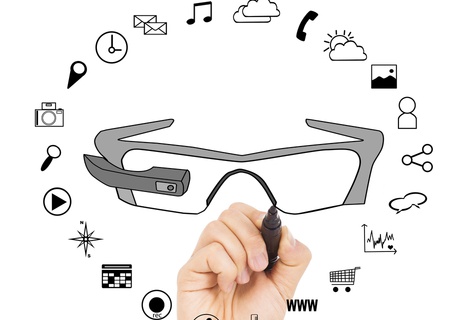Why Wearable Tech May See More Success in B2B

When Google revealed earlier this year that it was pulling Google Glass from tech store shelves, it was a surprise for many, considering the hype the wearable technology built up over the years.
But for many others, Google’s decision was simply the inevitable result of creating a futuristic gadget with an unaffordable price tag but without a true purpose among consumers, except to gawk at the chosen few who tested out the product in public.
Even with the decision for Google Glass to exit the consumer market with its tail between its legs, experts agree that the saga has launched interest in wearable technology and the Internet of Things expansion.
Not only do analysts expect wearable technology to survive Google Glass, but recent research actually expects the industry to thrive. A study released last week by Research and Markets found that by 2025 the wearable technology industry will likely be worth $70 billion.
The report, named “Wearable Technology 2015-2025: Technologies, Markets, Forecasts,” notes that today’s $20 billion wearable technology market is currently dominated by health care products like fitness trackers. But in the coming decade, researchers say, the technology will infiltrate industrial and commercial sectors, among others, and is now entering a phase of rapid growth around the globe.
B2B’s BIG OPPORTUNITY
The disinterest of today’s average consumer in wearable gadgets could open a big door for the business-to-business sector. A separate study released last December conducted by Forrester research revealed that while only 45 percent of adult consumers surveyed showed interest in the technology, 68 percent of companies said wearables are a priority for their workplace. In summarizing the findings, Forrester analyst J.P. Gownder concluded that “businesses don’t want to just give workers wearables. They want to use wearables to reshape their business models.”
Sony could be the first major world technology player to catch on. A Wall Street Journal report revealed Monday (March 2) that the Japanese firm is looking to enter the B2B wearable gadget industry and believes that interest in the technology among businesses will be easier to gauge than among consumers.
In an interview, Sony Mobile Communications President Hiroki Totoki told reporters, “It’s easier for us to determine how users will use our devices in the B2B market. The biggest benefit of wearable technologies is that they free up both hands. So we will be looking at what kind of workers want information on a real-time basis, in what kind of circumstances and what information they need.”
But the executive added that the options for wearable gadgets is disappointing today, adding that he is even dissatisfied with Sony’s smartwatch offerings. Wearables need to have appealing designs and be suitable for everyday wear, Totoki said.
The company had already declared a focus on business partnerships to push wearable technology in January. At the Wearable Device Technology Expo, held in Tokyo, Sony Mobile Communications SVP Kaz Tajima touted the benefits of innovators collaborating, not competing, with each other. “Wearables have a huge potential, through co-creation and collaboration, to create a new industry,” he said. “We should not compete with each other, but we should work together to identify potential markets.”
The company showcased its different business partnerships in wearables at CES, also in January, which include a deal with Virgin Atlantic in which staff use SmartWatches to oversee passenger information. Reports say the partnership will eventually lead the airline to adopt Sony SmartWear gadgets to run various operational processes, though reports did not elaborate on what.
LARGE HURDLES, EVEN LARGER BENEFITS
The business-to-business sector is notoriously lacking high technology adoption. Realistically, implementing wearable technology in the B2B market would likely face friction. But perhaps the largest point of friction for B2B players implementing wearables could also be the greatest asset: data.
According to Mike Pegler, PwC US Principal, businesses will need to invest in infrastructure to collect, sort and analyze the big data flowing in from wearable technology. “Enterprises must forget partnerships and develop IT and platform alliances to deliver seamless experiences on both the front end and back end of wearable implementations,” he told B2B News Network last month.
But that investment would be worth it, reports say, as the use of big data from wearable technology can be significantly valuable for the B2B space regarding marketing and supply chain management, among other areas.
It will likely be a long road for wearable technology developers to successfully integrate their innovations into the B2B world but, as industry experts continue to stress, it’s time for B2B to get technologically savvy, or be left behind.
